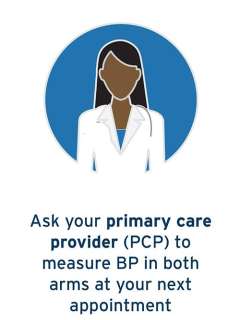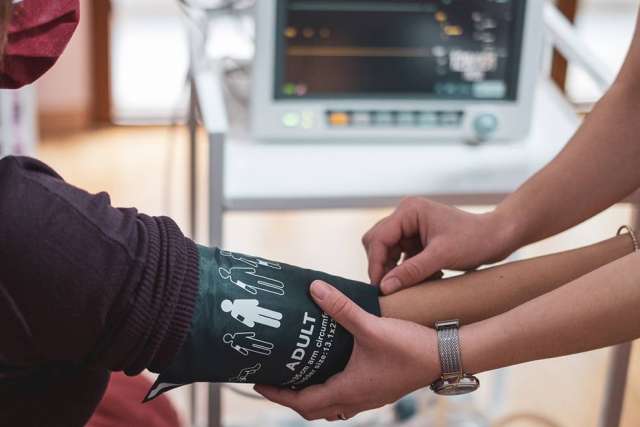Next time you head to your primary care physician (PCP) for a well visit, be sure to ask for a blood pressure reading in both arms. A recent study confirms a link between different arm-to-arm blood pressure and an increased risk for heart attack, stroke and death.
Previous studies also found people with a large interarm blood pressure difference are twice as likely to have peripheral artery disease – clogged arteries in legs, arms and other non-heart body parts. Peripheral artery disease affects more Americans than heart disease and stroke combined. If left untreated, it can lead to severe pain, amputation and even death.
It’s normal to have some difference in interarm blood pressures. But there’s cause for concern if that difference is larger than normal. Here’s what you need to know about your blood pressure readings:
Understanding blood pressure numbers
Your blood pressure is the measure of how much your blood is pushing against your artery walls. It’s measured in millimeters of mercury (mmHg). A blood pressure reading has two numbers:
- Systolic: The first, or top, number shows the pressure your blood exerts each time your heart beats. Normal systolic pressure is considered to be less than 120 mmHg. Your systolic pressure can be an important indicator of high blood pressure (hypertension) and heart disease, especially in people over age 50. As you age, your systolic blood pressure tends to increase naturally as plaque builds up in the arteries.
- Diastolic: The second, or bottom, number reflects your blood’s pressure on the arteries in between beats while your heart is resting. Normal diastolic pressure is less than 80 mmHg. An increase in diastolic pressure may also be used to diagnose high blood pressure, the single leading cause of preventable heart attacks, strokes and deaths.
Many risk factors hinge on your blood pressure. A diagnosis of hypertension reflects a blood pressure of more than 130/80 mmHg and puts you at a higher risk for a number of health concerns. According to the American Heart Association, the risk of coronary artery disease or stroke doubles in people age 40 to 89 with every increase of 20 mmHg systolic and 10 mmHg diastolic. Having both arms checked ensures you catch an increase in blood pressure if it occurs.
When to be concerned about a difference in your blood pressure readings

A slight interarm difference in blood pressure is common and does not pose a health risk. But if the systolic or diastolic difference between arms is greater than 10 mmHg, it becomes cause for concern. The larger the difference, the greater additional health risk.
Health risks associated with interarm differences in blood pressure include:
- Blocked artery (peripheral artery disease)
- Cognitive decline
- Diabetes
- Heart attack
- Kidney disease
- Stroke
An arm-to-arm difference greater than 10 mmHg occurs in approximately 4% of the general population. It occurs in 11% of people with diagnosed high blood pressure.
Talking to your doctor about blood pressure management
International blood pressure guidelines recommend taking the blood pressure in both arms, at least at the initial patient visit. But with new research, many physicians believe that taking the blood pressure in both arms every time is an easy way to spot health issues early.
If your PCP does not typically measure your blood pressure in both arms, be proactive about asking for it. If you discover a concerning reading or difference between arms, your PCP can help you make lifestyle changes or recommend treatment to keep you healthy.
To learn more about your blood pressure and how to manage it, reach out to your primary care provider.



